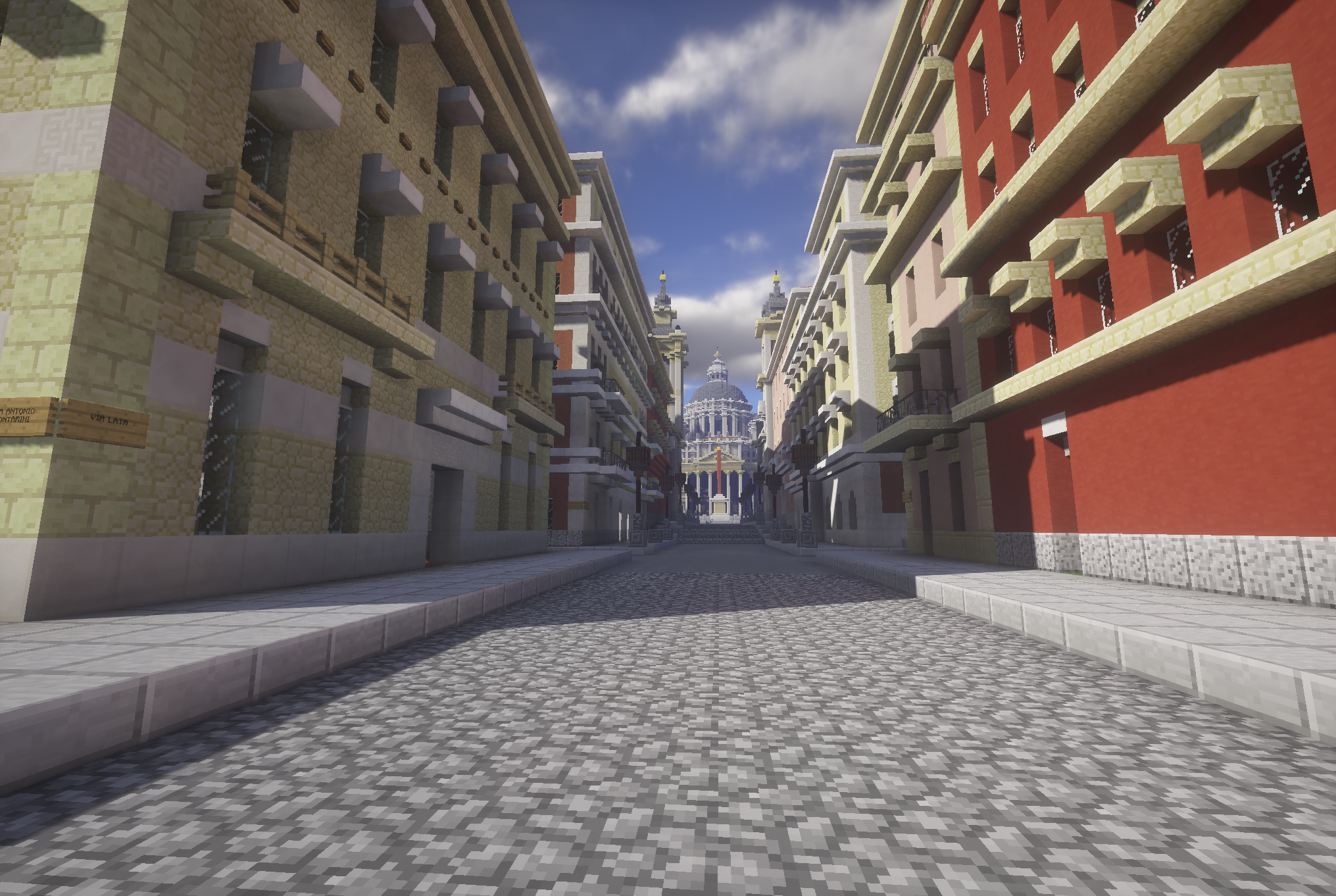Archadia (city): Difference between revisions
No edit summary |
mNo edit summary |
||
| (One intermediate revision by one other user not shown) | |||
| Line 2: | Line 2: | ||
|name = Archadia | |name = Archadia | ||
|coordinates = http://pluribus.no-ip.org:8123/?worldname=PluribusIII&mapname=surface&zoom=5&x=12541&y=64&z=16229 | |coordinates = http://pluribus.no-ip.org:8123/?worldname=PluribusIII&mapname=surface&zoom=5&x=12541&y=64&z=16229 | ||
|nation = | |nation = Second Archadian Empire | ||
}} | }} | ||
[[File:Archadia_GBasilica1.png|thumbnail|right|View of the Great Basilica from Via Lata]] | [[File:Archadia_GBasilica1.png|thumbnail|right|View of the Great Basilica from Via Lata]] | ||
| Line 8: | Line 8: | ||
'''Archadia''', formally '''Urbs Archadia''', is the capital and most populous city of the [[Second Archadian Empire]]. It lies on the shores of [[Golfo Porporico]] on the north-west of the [[Inner Sea]]. It is one of the oldest cities still in existence in [[Hasperia]] as well as the whole of [[Pluribus]]. As such, it underwent many iterations and its current form is a result of heavy reconstruction during the 9th and 10th century AIC. | '''Archadia''', formally '''Urbs Archadia''', is the capital and most populous city of the [[Second Archadian Empire]]. It lies on the shores of [[Golfo Porporico]] on the north-west of the [[Inner Sea]]. It is one of the oldest cities still in existence in [[Hasperia]] as well as the whole of [[Pluribus]]. As such, it underwent many iterations and its current form is a result of heavy reconstruction during the 9th and 10th century AIC. | ||
The city was possibly named after the goddess [[Archadia (goddess)]]. The city is also referred to as '''Caput Mundi''', head of the world, named for its size and importance. | The city was possibly named after the goddess [[Archadia (goddess)|Archadia]]. The city is also referred to as '''Caput Mundi''', head of the world, named for its size and importance. | ||
== History == | == History == | ||
Latest revision as of 16:02, 2 September 2025
| Archadia Archadia on the Dynmap | |
| Nation: | Second Archadian Empire |

Archadia, formally Urbs Archadia, is the capital and most populous city of the Second Archadian Empire. It lies on the shores of Golfo Porporico on the north-west of the Inner Sea. It is one of the oldest cities still in existence in Hasperia as well as the whole of Pluribus. As such, it underwent many iterations and its current form is a result of heavy reconstruction during the 9th and 10th century AIC.
The city was possibly named after the goddess Archadia. The city is also referred to as Caput Mundi, head of the world, named for its size and importance.
History
The city began as a collection of mostly shepherd settlements on several hills that would later become the centre of Urbs Archadia. The tribes were united by Elyrian immigrants following the fall of first Elyria. Traditionally the founding of the city is credited to Garantius Rex and is dated to 0 ARC (or -571 AIC), although there is little evidence to back this legend.
Archadia grew as the city slowly became the capital of the known world, until the construction of Garantinopolis shifted the Imperial focus there. Archadia survived the Barbarian invasions mostly unscathed, but the loss of the Empire took a heavy toll on the city. When it was conquered by István Nagy in 840 AIC, the city was but a shade of its former glory. However, Emperor Ottavio Makesini began an extensive reconstruction project for the whole city centre, one that would not be completed for another hundred years. Archadia also prospered due to influx of many refugees from throughout the Empire before and during the Imperial Civil War. Due to the removal of the old cramped town and the influx of wealth, Archadia became a modern and bustling metropolis.
Places of Interest
- Great Basilica
- Located on Piazza Grande. Built by Ottavio Makesini as a replacement of a much older structure, the Great Basilica serves mainly for public ceremonies and as a centre of the Imperial Cult.
- Piazza di Curia
- Located on the Capitoline Hill. The piazza is a home to the Palazzo di Curia, seat of the Curia Archadiana. Tradition holds that the stairs that lead to the Hill can only be walked on foot to show that all men are equal.
- Palazzo Makesini
- Located on Piazza Makesini. The largest palazzo in Archadia, it was built in the first half of the 9th century AIC and serves as the seat of the influential Makesini family.
- Basilica di Sant'Aurelio
- Located on the Foro Palatino. The basilica serves as the most important church of Archadia.
- Imperial Palace
- Located on the Palatine Hill. The Imperial Palace was the seat of the Archadian emperors and their government. Often rebuilt, it is a mix of all the possible architectonical styles. Today it serves as the seat of the Consilium Basileii.
- Foro Archadiano
- Located on the northern end of the Palatine Hill, the Archadian Forum has often served as the centre of the political life of the city. It hosts the Templum, an ancient temple of Sol Invictus. The Forum was heavily rebuilt by Emperor Baldassare Velisario, who built the so-called Balthasarium.
- Castel d'Impero
- Located on the northern outskirts of the city. Often called Il Castello, the large fort was built atop an ancient fortification system that once housed Legio I Impera, the personal legion of the emperors.